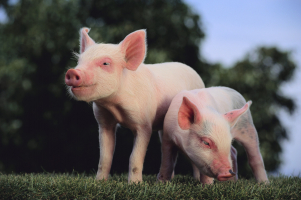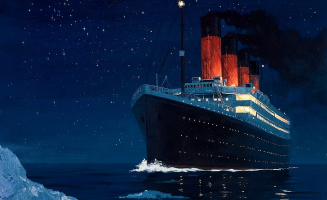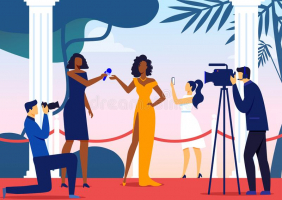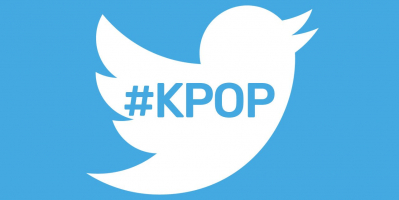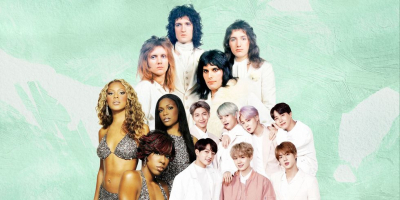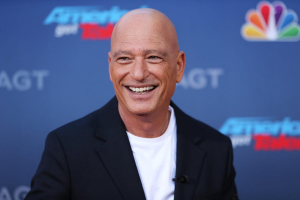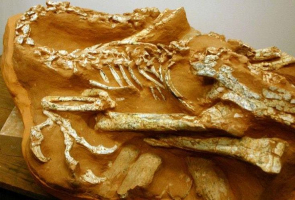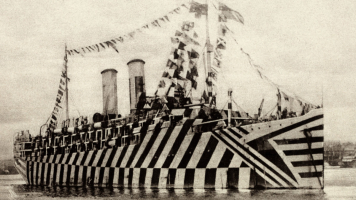Top 10 Bizarre Pop Culture Accidents
Accidents happen all the time in the world, and they can have either positive or negative consequences. A terrible accident can take a life, whereas a ... read more...fortunate one can result in a useful discovery, such as penicillin. However, not every accident must be high-stakes. Here is a list of bizarre pop culture accidents.
-
Anyone who grew up with Nintendo is familiar with the Konami Code. Every child has memorized the infamous cheat code. The sequence-UP, UP, DOWN, DOWN, LEFT, RIGHT, LEFT, RIGHT, B, A, B, A, START could make a player virtually invincible in Konami-published Nintendo games. It first appeared in the game Gradius, but it rose to prominence in the game Contra. It has also appeared in series such as Castlevania and Teenage Mutant Ninja Turtles, among others.
The code was, in essence, a cheat. It gave a player 30 extra lives in Contra. In Gradius, a player obtains nearly all of the available powerups. A man named Kazuhisa Hashimoto created it. He was working on Gradius and wanted a shortcut to make testing the game easier for himself. He created something simple to remember but impossible for a casual player to guess, and thus the code was born.
Before the game was released, the code was meant to have been removed. But it was left in the game by accident, forgotten during its development. It went on to become one of the most iconic parts of early gaming and is still used in many games even today.
Year: 1986
Founder: Kazuhisa Hashimoto
https://www.youtube.com/ https://www.youtube.com/ -
Among bizarre pop culture accidents, the Blade Runner Director's Cut is one of them. Blade Runner (1982), re-released under the banner "the director's cut," is described in the updated press pack as presenting a "new view of tomorrow" and proving to be "chillingly accurate" by director Ridley Scott. Both statements demonstrate that the star of Blade Runner was never Harrison Ford, but rather the city he depicted. The film's reputation has always been built on its elaborate cinematic depiction of a near-future Los Angeles (though it could be any city). Claims of 'prophecy' on the part of its creators a decade later are unavoidable; in the movie business, being ahead of your time is the perfect antidote to wider audience neglect; the film was a box office failure when it was first released.
The resulting cut is both more satisfying and more vexing. This Blade Runner succeeds in emphasizing Scott's best work's consistent frustration (with the possible exception of Thelma and Louise). Within each relentlessly surfaced Ridley Scott film, a more conceptually interesting film tries in vain to break through a gleaming carapace. The interior of the crew ship "Nostromo" was the real star of Alien; the victim's apartment was the eye-catcher in Someone To Watch Over Me. The city remains the star of Blade Runner, a more unsatisfactory state of affairs now that the full arrested development of Deckard's complex relationship with the female android is possible; it is increasingly irritating now that a purer, more logical, and darker vision is available.
Year: 1992
Language: English
Runtime: 1 hour and 57 minuteshttps://www.youtube.com/ https://www.youtube.com/ -
Phil Collins' song "In the Air Tonight" is probably best known for that iconic drum break. It's short, but it stands out and seems to be known by everyone. It's arguably the most famous use of a technique known as "gated reverb," which Collins accidentally discovered a year before recording that song.
Collins was working on a song with Peter Gabriel at the time, and the studio where they were recording had a talkback microphone. Hugh Padgham, the sound engineer, noticed that it picked up Collins' drumming in an unusual way. The talkback mic was not intended to record music; rather, it was a communication tool for speaking. It was heavily compressed and removed a lot of noise. It also had something called a "noise gate," which quickly stopped recording sounds. This resulted in the punchy reverb effect of the drums, which was a stark contrast to the more flat drum sound that was previously prevalent in music.The sound became huge and you can find it in a ton of ’80s music and even in stuff being recorded today.
Year: 1981
Events: Compression, gating, and reverb together
https://www.youtube.com/ https://www.youtube.com/ -
A lightsaber is a fictional energy sword that appears in the Star Wars series. A typical lightsaber is depicted as a 3-foot (0.91 m) long luminescent plasma blade emitted from a 10.5-inch (27 cm) long metal hilt. It was first seen in the original Star Wars film[a] and has since appeared in the majority of Star Wars films, with at least one lightsaber duel taking place in each installment of the "Skywalker saga." The lightsaber's distinct appearance was created using rotoscoping for the original films, and with digital effects for the prequel and sequel trilogies.
When Star Wars was released, it revolutionized the special effects industry and gave rise to Industrial Light and Magic, one of Hollywood's largest and most innovative effects companies. But it wasn't just the visuals that were impressive; the sound design was also noteworthy. Many of the iconic soundscapes were created with amazing ingenuity.
Dumpsters were used to obtain AT-AT walkers. TIE fighters are a cross between an elephant and a car on wet pavement. The majority of laser blasts are caused by guide wires colliding. And what about lightsabers? Those were unintentional. Ben Burtt, the sound designer, explained that he came across the sound he was looking for while walking from one side of a room to the other. The microphone picked up a signal from the old picture tube and produced the familiar buzzing hum of a lightsaber.
Events: combined the sounds of a 35mm projector and a 70s tube TV
https://www.youtube.com/ https://www.youtube.com -
Sports mascots occupy an unusual position in society, straddling the divide between sports and pop culture while having little to do with either. A mascot is essentially a cheerleader, there to entertain fans and possibly pump up a crowd. They were silly costumes that had nothing to do with the team they represented, such as the Phillie Phanatic. Another one that makes you scratch your head? Gorilla of the Phoenix Suns. He happened by chance. Because neither the phoenix nor the sun has much to do with gorillas, their mascot is understandably perplexing. Henry Rojas had no intention of becoming their mascot, either. He just showed up at a game dressed as a gorilla.
Rojas worked for a singing telegram company and also worked at the Suns' coliseum. He was attempting to mind his own business, do his job, and then leave. However, when he stood up to leave during a break in play, music began to play over the speakers. People assumed something was going on when they saw a gorilla on the court. He danced because someone encouraged him to. A ref even threw a ball to him, and he sank a shot. People went insane over it. The team management actually hated it at first, but they couldn’t stop him from performing on time.
Rojas got a kick out of the fan reaction, so he kept coming back dressed in costume and dancing or goofing around. The crowd loved it and eventually, the team made him official.
Year: 1980
Events: the story of how a singing telegram became one of the sport's most iconic mascots.
https://www.youtube.com/ https://www.youtube.com/ -
When it comes to bizarre pop culture accidents, can't help but mention Killer Bob on Twin Peaks. Twin Peaks, a surreal mystery/horror drama created by David Lynch, featured bizarre imagery and characters. It's also a stunning example of Lynch's perplexing storytelling style. Because so much depended on an accident, the end result could not have been what he had envisioned from the start. Killer Bob was the result of that accident. Killer Bob is a fictional entity that can possess humans and cause them to commit heinous crimes such as murder. Bob was the series' antagonist, and he was played by a man named Frank Silva. But it all happened by chance.
In the show, Silva was a set dresser, which meant he did things like arrange furniture and hang photos to make the set look real for filming. Lynch liked Silva's appearance and shot a scene with him for no apparent reason, with Silva crouched behind a character's bed, unsure if he'd ever use it for anything. In a later scene, his reflection is caught in a mirror. David Lynch liked it so much that he kept it in and based Killer Bob on it. After Silva died, he even brought Bob back for the series sequel.
Year: 1990-1991
Events: Silva’s unnamed character would be revealed as Laura’s true killer.
https://www.youtube.com/ https://www.youtube.com/ -
The Guess Who's "American Woman" may appear to be an anthem praising the ladies of the 50 states, perhaps an heir to the Beach Boys' "California Girls." However, if you look at the lyrics and the band's explanation of the meaning, you'll see that it's far from complimentary. "American Woman" was a critique of the seductive but dangerous women across their homeland's southern border for these Canadian rockers, and the American woman in the song is actually a metaphor for the United States and all of its domestic and foreign turmoil.
Music has an odd way of working. People hear what they want to hear, even if the message of the artist contradicts their beliefs. "Imagine" by John Lennon is perhaps the most famous example. Most people believe that the beautifully written song encourages people to put aside their differences. However, John Lennon described the song as "virtually the Communist manifesto." Similarly, the origins of The Guess Who's "American Woman" contradict the popular belief.
"American Woman” was a happy accident, inspired by an overzealous border agent, a broken guitar string, and an impromptu concert in a Canadian curling ring. That might make “American Woman” by The Guess Who the most serendipitous song ever made!
Year: 1970
https://www.youtube.com/ https://www.youtube.com/ -
Jessica Simpson is well-known for her singing and acting career, which began in a Texas church. People adore this celebrity for her appearance as well as her abilities, and some claim to know everything there is to know about her. Most celebrities have some sort of vice that usually involves drinking, smoking, or hardcore drugs, and Simpson is no different. She was addicted to a nicotine chewing gum called Nicorette, and she admitted to it when she was on Jay Leno's talk show back in 2010.
Simpson stated that she had never smoked a cigarette in her life and was given the gum by mistake. She claims she was given it by a friend's mother without realizing what it was, and she has been hooked ever since. It's unclear whether she still struggles with this addiction, but she did at one point in her life. She called the flavor "fireworks" and insisted on having more! According to Simpleton, not only does she love the taste of the stuff, but she also claims it gives her the energy of "three Red Bulls." This is one of the most bizarre pop culture accidents you should know.
Year: 2010

https://www.eonline.com/ 
https://greenrushdaily.com/ -
Saturday Night Live actors frequently go on to have diverse and interesting careers in pop culture, but few have done more than Dan Aykroyd. The legendary star of Ghostbusters and the Blues Brothers is also a writer and singer. He even makes wine, but let's get back to the singing.
Aykroyd is obviously a music fan. His appearances in the Blues Brothers films have demonstrated this, first in the original 1980 film and then nearly 20 years later in the sequel. He was also a co-founder of the House of Blues restaurant chain. Outside of the Blues Brothers, one of the few places you'll ever hear him sing is on the 1985 charity single "We Are The World."
Michael Jackson and Lionel Richie wrote the song, which was recorded to benefit famine relief in Africa. The single sold over 20 million copies, making it one of the all-time best-selling singles. It features a who's who of 80s music legends such as Stevie Wonder, Diana Ross, Paul Simon, Bruce Springsteen, Willie Nelson, Bob Dylan, Ray Charles, and dozens more. Dan Aykroyd, too. But why is that?
Aykroyd was interviewing a business manager in the building where the song was being recorded. It was the incorrect location. He was in a talent manager's office. He agreed when the man asked if he wanted to be on the recording because he was already there.
Year: 1985
https://www.youtube.com/ https://www.youtube.com/ -
Bugs Bunny is an animated rabbit created by Warner Brothers for its Looney Tunes short film series. Bugs Bunny, who rose to prominence during the so-called "golden age" of American animation (1928–c. 1960), has remained one of the world's most popular cartoon characters.
Bugs Bunny was created at Warner Brothers studios by Leon Schlesinger's animation unit. Because of its spartan accommodations on the Warner lot, the unit was nicknamed "Termite Terrace," and it housed some of the top names in animation, including Tex Avery, Chuck Jones, Bob Clampett, and Friz Freleng, as well as renowned voice artist Mel Blanc and musician Carl Stalling.
Bugs Bunny was the result of multiple sources of inspiration. Animator Ben ("Bugs") Hardaway accidentally christened him when a fellow employee labeled his casual sketch of a proposed rabbit character "Bugs's Bunny." Robert McKimson created the character's model sheet; Freleng developed Bugs' personality; Avery and Jones refined him further; and Blanc imbued him with his trademark wisecracking Brooklynese delivery. Bugs appeared in embryonic form in Warner cartoons as early as 1938, but his familiar incarnation did not appear until A Wild Hare (1940). It's considered one of the bizarre pop culture accidentsYear: 1938
Events: Animator Ben (“Bugs”) Hardaway inadvertently christened him when his casual sketch of a proposed rabbit character was labeled “Bugs's Bunny” by a fellow employee.
https://www.youtube.com/ https://www.youtube.com/












